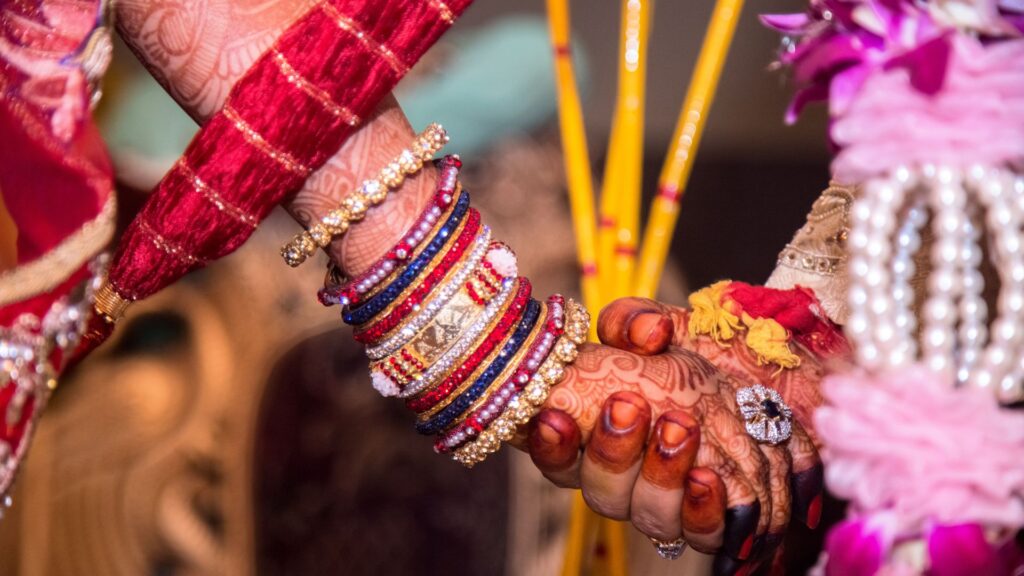
Understanding the Role of Guna Milan in Indian Marriages: Tradition, Compatibility, and Modern Perspectives
In the vibrant tapestry of Indian marriages, rituals and traditions weave together to form a bond that transcends time. Among these customs, Guna Milan stands as a significant pillar, shaping the foundation of matrimonial compatibility. Rooted in ancient Vedic astrology, Guna Milan, also known as Kundali matching, is a practice where the birth charts of prospective partners are analyzed to assess their compatibility. While its significance has been deeply ingrained in Indian culture for centuries, the relevance and interpretation of Guna Milan have evolved with the changing times.
Understanding Guna Milan:
Guna Milan is based on the principles of Vedic astrology, which believes that celestial bodies and their positions at the time of birth influence an individual’s life journey, including their relationships. The process involves matching the birth charts, or Kundalis, of the bride and groom to determine their compatibility across various aspects of life.
The 36 Gunas:
The compatibility assessment in Guna Milan revolves around 36 Gunas, each representing different aspects of life and personality traits. These Gunas are categorized into eight groups, namely Varna, Vashya, Tara, Yoni, Graha Maitri, Gana, Bhakoot, and Nadi. Let’s explore these categories briefly:
- Varna (1 Guna): It assesses the spiritual compatibility between partners.
- Vashya (2 Gunas): This category indicates the level of control or dominance one partner may have over the other.
- Tara (3 Gunas): Tara signifies the health and well-being of the couple post-marriage.
- Yoni (4 Gunas): Yoni reflects the sexual compatibility and intimacy between partners.
- Graha Maitri (5 Gunas): It measures the mental compatibility and friendship between partners.
- Gana (6 Gunas): Gana signifies the temperament compatibility between partners.
- Bhakoot (7 Gunas): This category assesses the financial prosperity and family welfare after marriage.
- Nadi (8 Gunas): Nadi indicates the health and progeny prospects of the couple.
The Process of Guna Milan:
The process of Guna Milan involves assigning points to various Gunas and their attributes in the Kundalis of the bride and groom. These points are then totaled to determine the overall compatibility score. A higher score indicates better alignment and compatibility between the partners, according to traditional beliefs.
Factors Considered in Guna Milan:
Several factors are taken into account during Guna Milan, including:
- Nakshatras (Lunar constellations): The position of the Moon in the birth chart, particularly the lunar constellations, plays a crucial role in determining compatibility.
- Bhakoot (Moon sign compatibility): This aspect assesses the emotional compatibility between the partners based on the position of the Moon in their respective charts.
- Gana (Nature compatibility): It evaluates the temperament and compatibility of the partners based on their inherent nature, categorized into Deva (divine), Manushya (human), and Rakshasa (demonic) Gunas.

Significance in Marriages:
Guna Milan holds significant importance in Indian marriages for several reasons:
Cultural Beliefs: It is deeply rooted in Indian culture and traditions, with many families considering it essential for ensuring a harmonious and prosperous marital life.
Family Approval: In many communities, Guna Milan is seen as a crucial step before finalizing a marriage proposal. A favorable compatibility score strengthens family approval and confidence in the match.
Astrological Guidance: For believers in astrology, Guna Milan serves as a guiding principle to make informed decisions about marriage, considering planetary influences and cosmic energies.
Modern Perspectives:
While Guna Milan continues to be a revered tradition, its interpretation and significance have evolved in modern times:
Compatibility vs. Individuality: Modern couples often balance traditional beliefs with individual preferences and compatibility factors beyond astrological considerations.
Scientific Skepticism: Some individuals question the scientific validity of Guna Milan and prefer to rely on personal compatibility, shared values, and mutual understanding.
Supplementary Tool: Many couples view Guna Milan as one of the many factors to consider in the broader context of compatibility, alongside factors such as communication, shared goals, and mutual respect.
Conclusion:
In the intricate tapestry of Indian marriages, Guna Milan remains a significant thread, weaving together tradition, belief, and astrological guidance. While its importance is undeniable in many communities, modern perspectives offer a nuanced understanding, emphasizing the balance between tradition and individual choice. Whether seen as a guidin principle or a cultural tradition, Guna Milan continues to play a role in shaping the journey of matrimonial unions, blending ancient wisdom with contemporary sensibilities.
